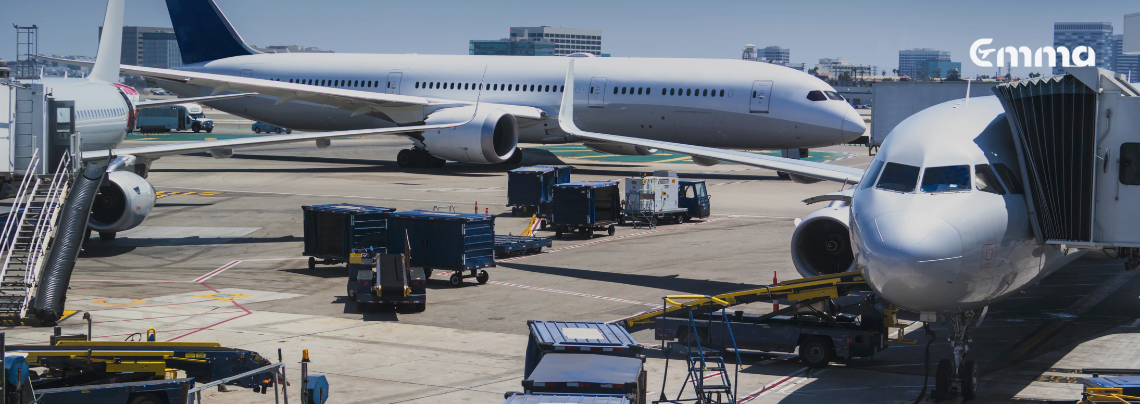Why Airport Turnaround Management Holds the Greatest Potential for Airport Efficiency and 6 Digit Revenue Growth

By Jean Luc Devisscher
20/5/2025
Understanding Airport Turnaround Management
Airport turnaround management is the process of managing the time required for loading, unloading, servicing, and preparing an aircraft for its next flight. It encompasses all activities related to aircraft ground handling, ensuring an efficient and seamless transition between arrival and departure. Effective turnaround management enables airports to optimize resources, enhance operational efficiency, and improve on-time performance.
The benefits of improved turnaround management are substantial. Studies indicate that reducing turnaround time by just five minutes can generate millions in additional revenue for Tier 1 airports. A seemingly small improvement can have a significant impact on an airport’s overall profitability and efficiency.
Introduction
The aircraft turnaround process is vital for airline schedule adherence, passenger satisfaction, and overall economic efficiency. While airlines measure productivity in terms of fleet utilization, airport operators, ground handling companies, and air navigation service providers must also ensure the optimal use of scarce resources, such as staff, equipment, and airport infrastructure.
Given the complexity of turnaround operations—both in terms of the number of involved stakeholders and the interdependent processes—it is crucial to manage technical, regulatory, and operational aspects efficiently. Delays in any sub-process can trigger cascading disruptions, affecting multiple flights and leading to systemic inefficiencies.
Reducing Aircraft Turnaround Delays
Minimizing aircraft turnaround delays is critical to ensuring operational efficiency and cost savings. Missed departure slots due to delayed turnaround can significantly impact an airline’s profitability, leading to potential fines, increased operational costs, and customer dissatisfaction. Delayed departures are particularly problematic during peak hours or at slot-constrained airports, where congestion can create further inefficiencies.
One of the primary objectives of any airline is to maximize aircraft utilization while minimizing ground time. Even shaving a few minutes off turnarounds can yield significant cost savings and operational improvements across an airline’s network.
Tangible Benefits of Turnaround Optimization
International studies show that reducing aircraft turnaround time by just five minutes can generate approximately $11 million in additional revenue per year for an airport handling around 25 million passengers. Given this substantial financial incentive, all stakeholders involved in the turnaround process are actively seeking ways to optimize and streamline operations.
There are multiple approaches to shortening turnaround time, leveraging both technology and process improvements:
AI-Powered Turnaround Management Systems (TMS)
Advanced AI-powered Turnaround Management Systems (TMS) equipped with Computer Vision provide airports with real-time, automated tracking of ground handling activities. By enabling real-time visibility and automation, TMS solutions help ensure smoother operations, reducing delays and enhancing overall efficiency.
Airport Collaborative Decision Making (A-CDM)
Another critical tool in turnaround optimization is Airport Collaborative Decision Making (A-CDM), a structured process designed to enhance coordination and communication among all turnaround stakeholders. The A-CDM platform continuously shares departure-related data, improving predictability and optimizing operations.
By integrating A-CDM into airport operations, airports can achieve a more structured and efficient turnaround process, ultimately improving overall performance and reliability.
Getting Started with Turnaround Optimization
Turnaround optimization is undeniably a critical component of airport operations. To unlock new efficiencies and revenue opportunities, airports must conduct a thorough analysis of existing processes, identifying inefficiencies and areas for improvement. Engaging all stakeholders in this process is essential to gaining a comprehensive understanding of roles, responsibilities, and dependencies.
Want to learn more? Contact us at marketing@emma.aero to explore how your airport can enhance turnaround efficiency and unlock new revenue opportunities.



